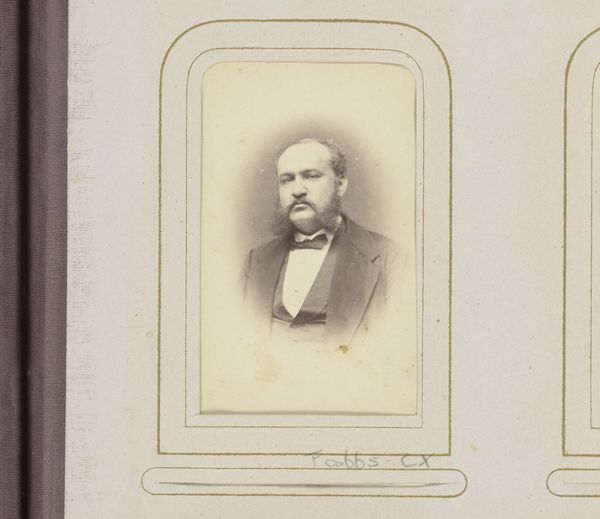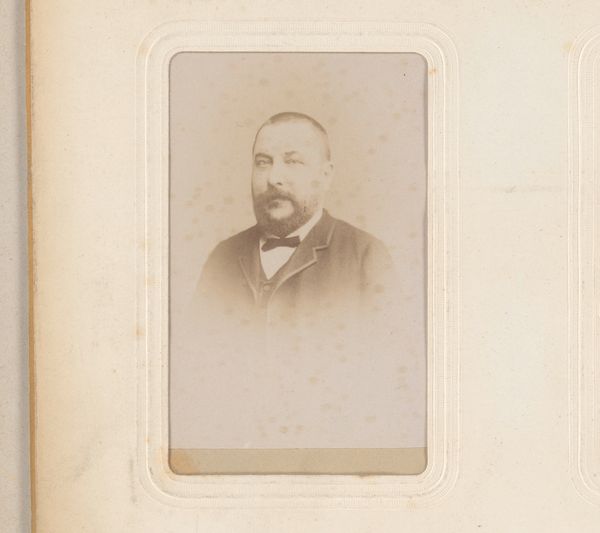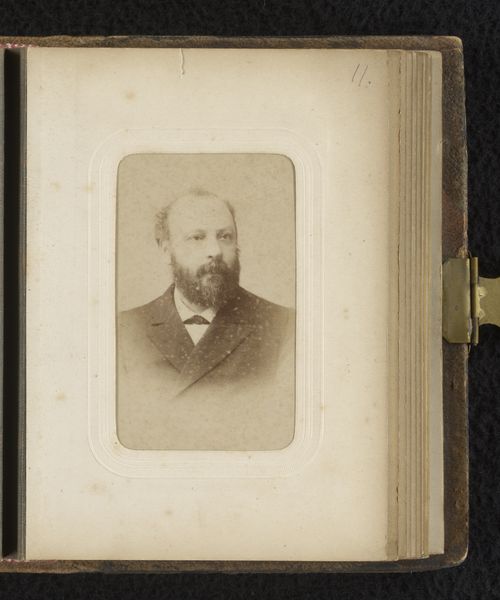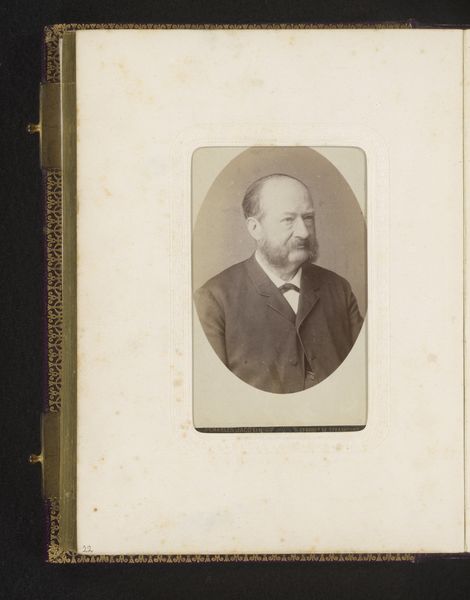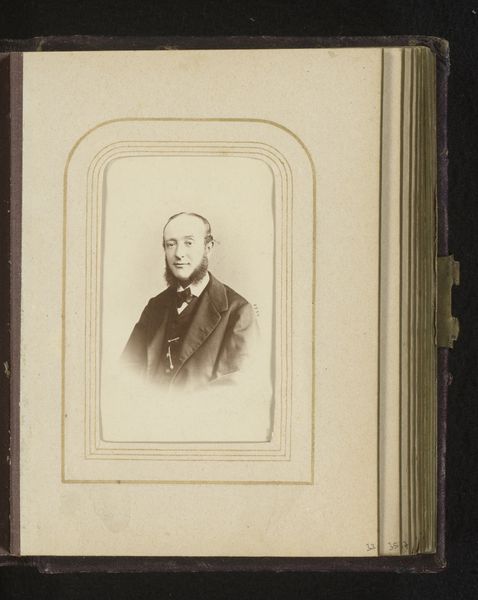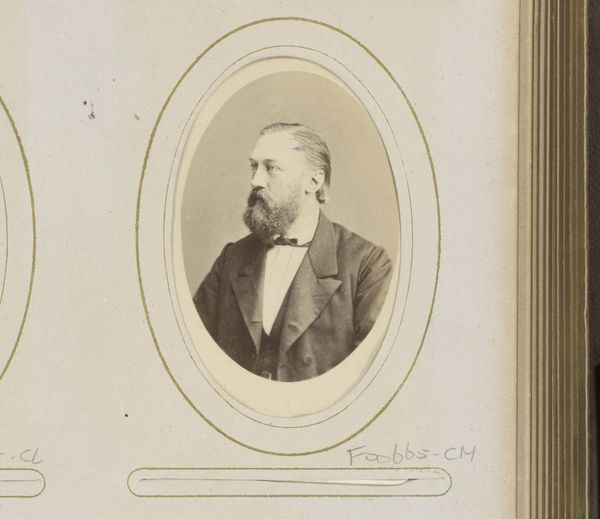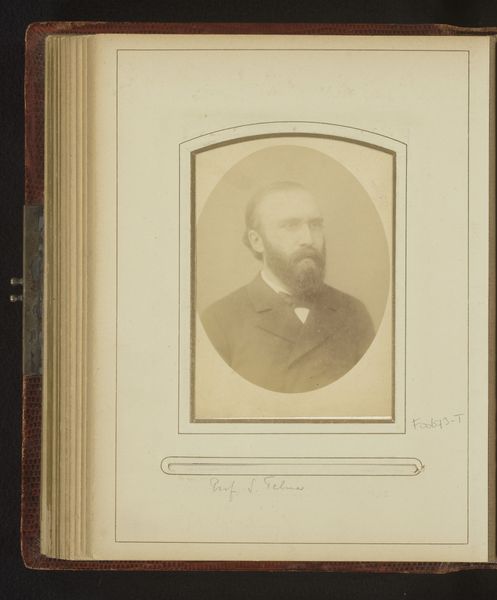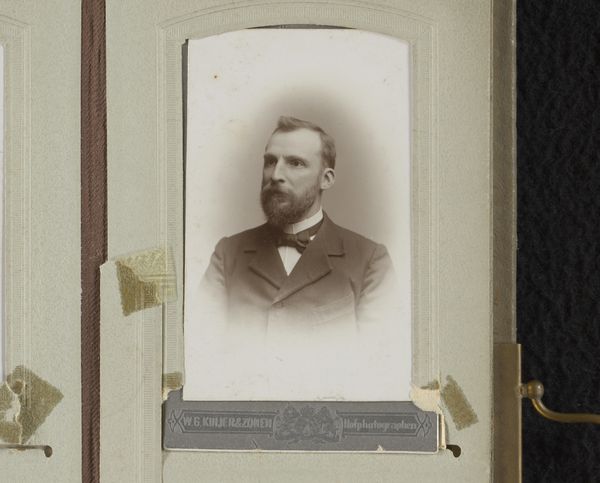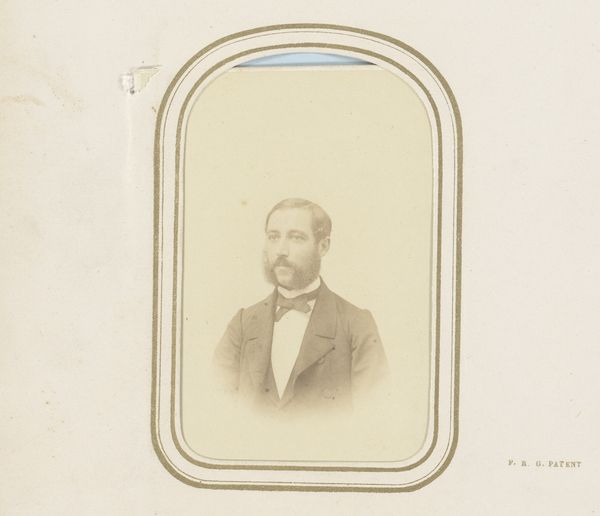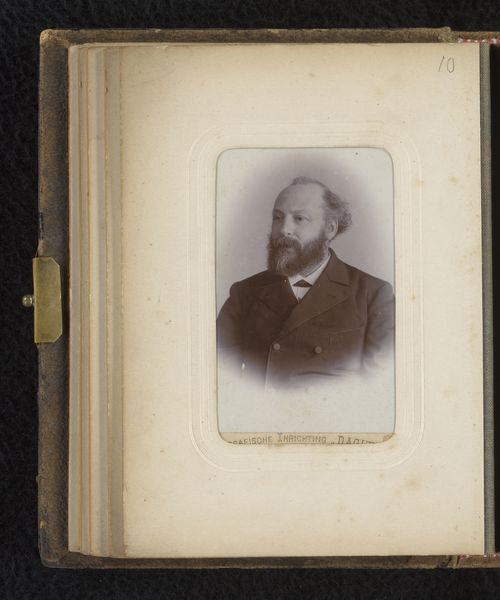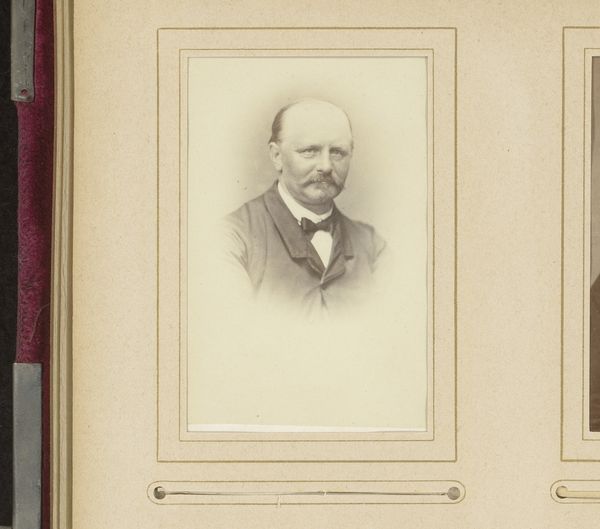
photography, gelatin-silver-print
#
portrait
#
photography
#
gelatin-silver-print
#
realism
Dimensions: height 135 mm, width 96 mm
Copyright: Rijks Museum: Open Domain
Curator: Let’s turn our attention now to an intriguing photograph from the latter half of the 19th century: "Portret van een man," created sometime between 1850 and 1900. It's a gelatin-silver print. Editor: My initial reaction is one of almost startling directness. The man’s gaze, his stance – there's an unapologetic confidence. I find myself wondering about the power dynamics at play, who he was, and what position he occupied in society to be rendered this way. Curator: That intensity is undeniable. Formally, the oval frame, the limited tonal range… everything draws the eye to the man’s face. Notice the subtle gradations in the greyscale, rendering the texture of his beard and the fabric of his suit with such fidelity. Editor: And how that very fidelity could be loaded! Photography was still relatively new then; what did it mean to capture, control, and disseminate someone’s likeness? His class status is clear. Photography offered burgeoning elites a powerful new tool to affirm and circulate their power, contrasting them against marginalized subjects. Curator: Precisely. And even in its photographic realism, there’s artifice. The framing, the controlled pose, speak to a construction of identity – one perhaps both personal and imposed by societal expectations. This realism echoes a certain pictorial tradition of portraiture at that time. Editor: The question of authorship feels significant here, as well. Was this for personal posterity, or was it meant for broader consumption? It prompts consideration of issues surrounding representation and who gets to define visual narratives within social power structures. Whose vision are we seeing here? Curator: Indeed. The artist, Hans Rupprecht, likely aimed to capture more than just a likeness, and it’s these layers of context, construction, and interpretation that imbue the piece with such depth. The visual construction is fascinating in and of itself, from composition, framing, and technical excellence. Editor: And when those structures subtly reinforced—or perhaps challenged, we cannot be certain—existing societal orders through image-making. The photograph then becomes less of a mirror, but also an actor, in social constructs. Curator: The interplay between what is immediately apparent and the deeper meanings encoded within makes for a fascinating tension to appreciate and unpack. Editor: Agreed. By exploring beyond surface appearances, and thinking intersectionally about visual vocabularies, we've uncovered potential narrative forces and complexities present in this individual portrait.
Comments
No comments
Be the first to comment and join the conversation on the ultimate creative platform.
